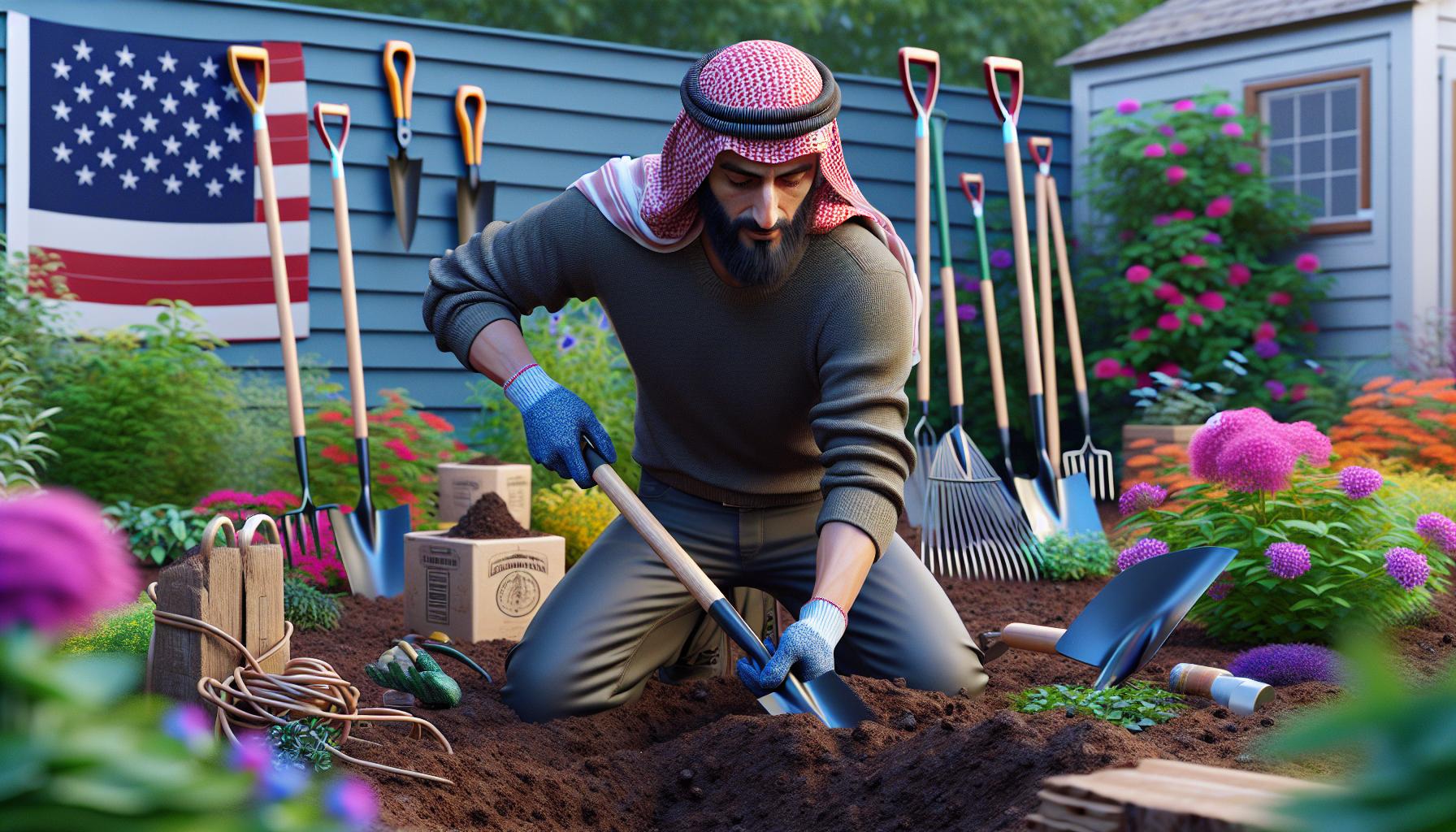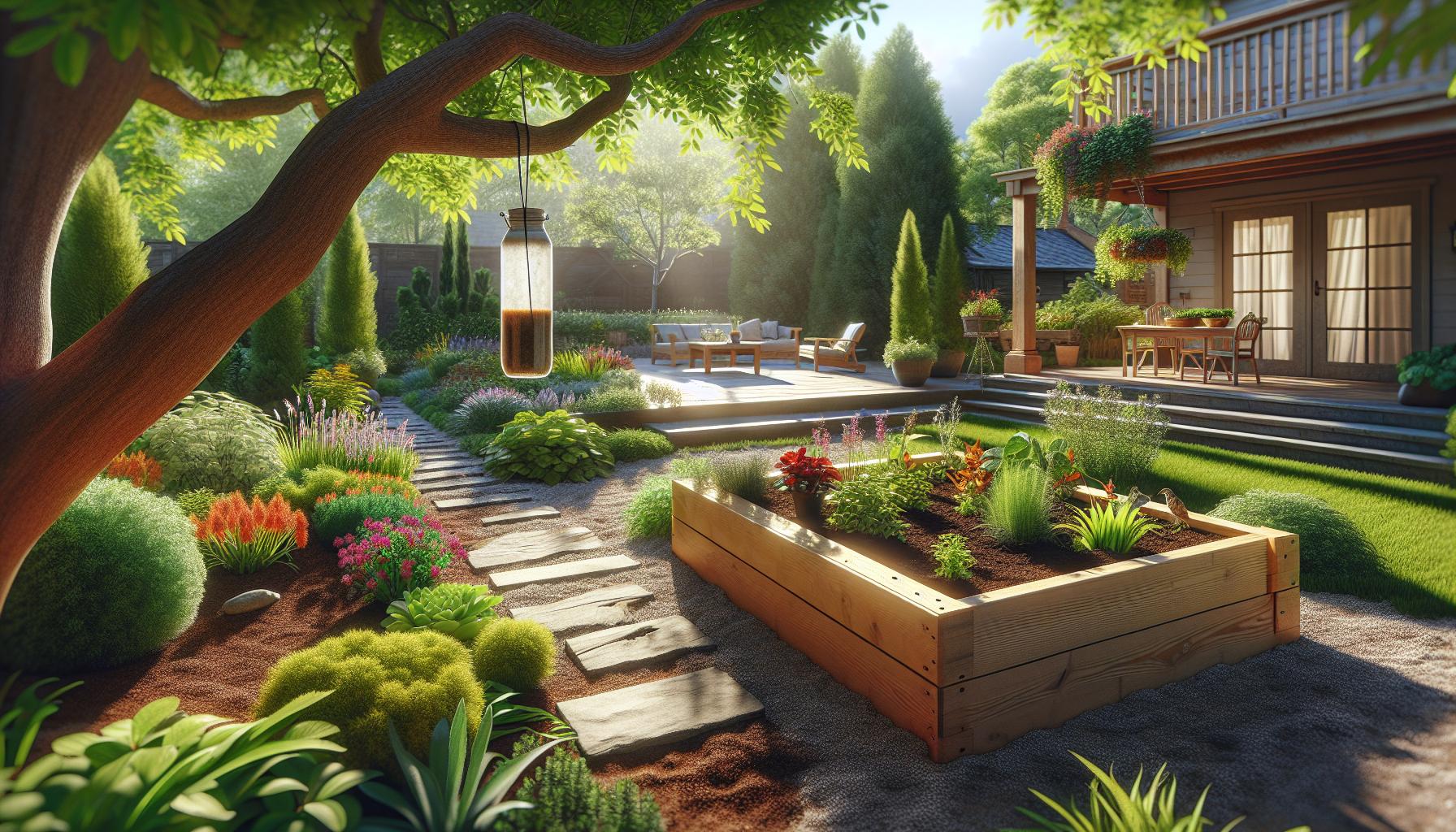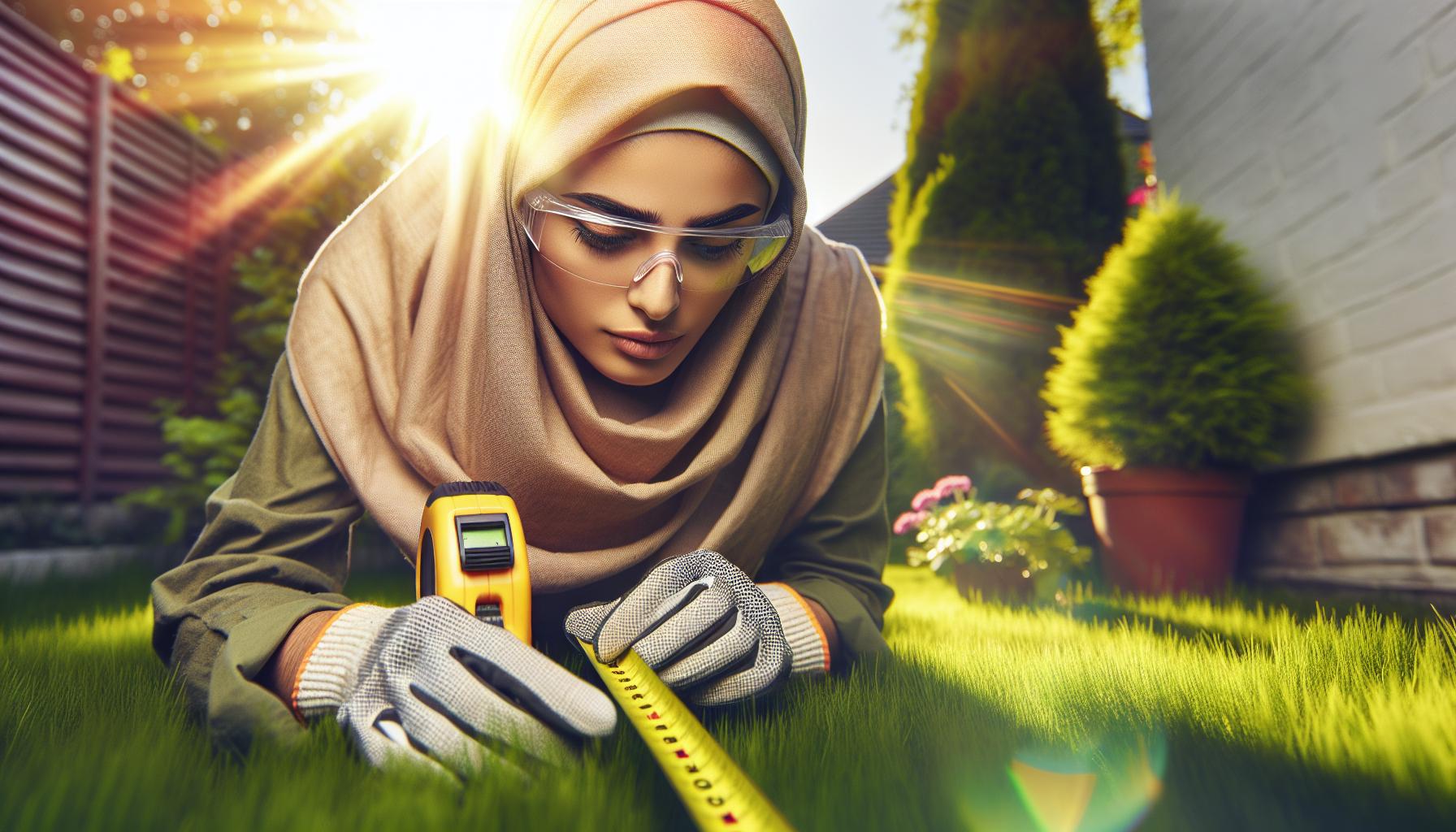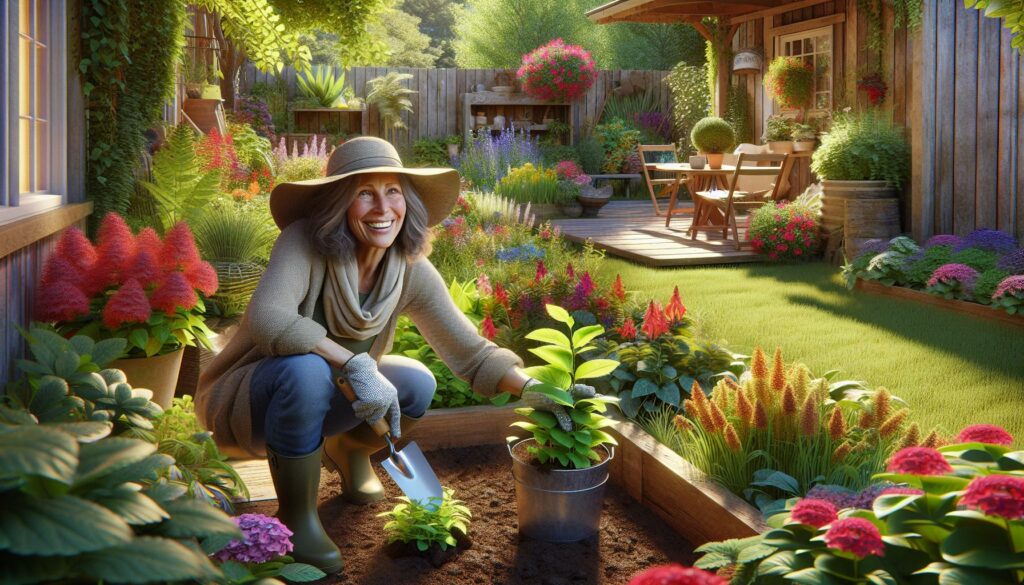Transforming your yard into a personal oasis doesn’t have to break the bank. With a little creativity and some DIY spirit, you can tackle projects that elevate your outdoor space while adding value to your home. Whether you’re looking to create a cozy seating area, build a vibrant garden bed, or install a simple water feature, the possibilities are endless.
I love diving into DIY yard projects because they not only bring a sense of accomplishment but also allow me to express my style. From upcycling materials to incorporating sustainable practices, each project offers a chance to enhance my outdoor living experience. Join me as I explore inspiring ideas and practical tips that can help you turn your yard into the retreat you’ve always dreamed of.
Key Takeaways
- Cost-Effective Enhancements: DIY yard projects save money by eliminating labor costs and using affordable materials, making outdoor transformations budget-friendly.
- Personalized Outdoor Space: Engaging in these projects allows for unique designs that reflect individual style, creating a deeper connection with the yard.
- Skill Development: DIY projects provide opportunities to learn new skills in areas like gardening, landscaping, and woodworking, enhancing personal capabilities.
- Increased Property Value: Improving the yard’s curb appeal through DIY projects can significantly raise a home’s market value, attracting potential buyers.
- Variety of Projects: Options like building raised garden beds, creating pathways, and installing fire pits can enhance both functionality and aesthetics of outdoor spaces.
- Safety and Planning: Prioritizing safety and thorough planning, including assessing space and setting a budget, are essential for successful and enjoyable DIY projects.
DIY Yard Projects
DIY yard projects offer creative ways to enhance outdoor spaces while providing a fulfilling experience. Engaging in these projects transforms a yard into a personal oasis that reflects individual style.
Benefits Of DIY Yard Projects
- Cost-Effective Solutions: DIY yard projects allow me to save money by eliminating labor costs. Using affordable materials enables budget-friendly transformations.
- Personalization: I can create unique designs that reflect my preferences and lifestyle. Customization leads to a more personal connection with my outdoor space.
- Skill Development: Working on these projects helps me learn new skills. Gaining experience in woodworking, landscaping, or gardening enhances my capabilities.
- Increased Property Value: Enhancing curb appeal can raise my home’s market value. Attractive outdoor features make my property appealing to potential buyers.
- Satisfaction and Accomplishment: Completing a DIY project brings a sense of achievement. Watching my efforts come to life provides immense personal satisfaction.
- Garden Beds: Building raised garden beds allows me to grow vegetables and flowers while improving aesthetics. They also offer better soil drainage and pest control.
- Seating Areas: Creating outdoor seating with benches or chairs enhances relaxation. Incorporating cushions and blankets makes the space more inviting.
- Fire Pits: Installing a fire pit extends outdoor enjoyment into cooler months. It serves as a focal point for gatherings, making evenings memorable.
- Pathways: Designing pathways with stones or bricks defines spaces in my yard. It guides visitors through gardens while adding visual interest.
- Water Features: Adding simple water features, like fountains or ponds, introduces soothing sounds. They can promote tranquility and enhance the overall ambiance.
Essential Tools And Materials

Having the right tools and materials makes a significant difference in executing DIY yard projects effectively. Here’s a breakdown of what you’ll commonly need.
Common Tools Needed
- Shovel: A sturdy shovel works well for digging holes and moving soil.
- Rake: A rake helps level soil and remove debris.
- Garden Hoe: A hoe assists in breaking up soil and weeding.
- Pruning Shears: Pruning shears are essential for trimming plants, hedges, and flowers.
- Hand Trowel: A hand trowel is perfect for planting and transplanting smaller plants.
- Level: A level ensures that structures, like garden beds and paths, are even.
- Measuring Tape: A measuring tape is crucial for accurate measurements.
- Power Drill: A power drill is handy for assembling structures and installing fixtures.
- Wheelbarrow: A wheelbarrow simplifies transporting heavy materials.
- Gloves: Durable gloves protect hands while handling tools and materials.
- Timber: Use treated timber for building raised beds and seating.
- Soil: Quality soil supports plant growth and garden health.
- Mulch: Mulch aids in moisture retention and suppresses weeds.
- Pavers or Stones: Natural stones or pavers create attractive pathways and patios.
- Plants: Select native plants for easy maintenance and local ecological benefits.
- Fencing: Affordable fencing materials help define spaces and provide privacy.
- Landscape Fabric: Landscape fabric prevents weed growth in garden beds.
- Paint or Stain: Non-toxic paint or stain enhances the appearance of outdoor furniture.
- Water Features: Pre-formed ponds or fountain kits create tranquility.
- Lighting: Solar-powered lights add safety and ambiance to outdoor spaces.
Step-By-Step Guide To Simple DIY Yard Projects

Completing DIY yard projects provides a rewarding experience while enhancing outdoor spaces. Here’s a detailed look at three simple projects that add value and charm to any yard.
Project 1: Building A Raised Garden Bed
- Choose The Location: Select a sunny area with good drainage.
- Gather Materials: Use rot-resistant wood, such as cedar, along with screws and a saw.
- Measure Dimensions: Cut wood to desired length and height; 4 feet by 8 feet works well for most gardens.
- Assemble The Frame: Lay the cut pieces on the ground and join them using screws to form a rectangular frame.
- Position The Frame: Place the frame in your chosen location; ensure it’s level.
- Add Soil: Fill the bed with quality soil and compost mix, about 12-18 inches deep.
- Plant Your Seeds: Choose plants suitable for your climate and space them according to packaging instructions.
Project 2: Creating A Pathway
- Plan The Pathway: Decide on a route that connects key areas in the yard, like the patio and garden.
- Select Materials: Use stones, bricks, or pavers; choose materials that complement your landscape.
- Mark The Path: Use stakes and string to outline the desired pathway.
- Excavate The Area: Dig about 4-6 inches deep along the marked path.
- Lay The Base: Add a layer of gravel for drainage, followed by a sand layer for leveling.
- Place The Stones: Arrange stones or pavers closely together, ensuring they’re stable.
- Fill Gaps: Use sand or gravel to fill any gaps between stones for a polished finish.
- Select A Location: Choose a spot visible from your home, preferably near a tree or shrub.
- Gather Materials: An empty milk jug or a wooden feeder kit works well; also have screws and a saw if you’re constructing a wooden feeder.
- Cut Openings: For a milk jug, cut small holes for feeding; for wooden designs, follow kit instructions.
- Decorate (Optional): Paint or decorate the feeder to match your yard aesthetic.
- Mount The Feeder: Securely attach to a pole or branch, ensuring it’s stable and reachable.
- Fill With Feed: Use birdseed that attracts local bird species; refill as necessary.
- Monitor Activity: Enjoy watching different birds visit your yard as they feed.
Tips For Successful DIY Projects

Successful DIY yard projects require thorough planning and attention to safety. Implementing these strategies ensures a smooth process and a satisfying outcome.
Planning Your Project
Planning your project starts with defining your goals. Identify what you want to achieve, whether it’s enhancing aesthetics or creating functional spaces.
- Assess Space: Measure your yard dimensions to understand available space. Consider both sunlight and shade areas for optimal plant growth.
- Set a Budget: Determine a budget that accounts for materials and tools, ensuring you prioritize cost-effective options.
- Research Ideas: Explore various creative designs and project ideas that resonate with your vision and preferences. Websites, gardening books, and home improvement stores offer inspiration.
- Develop a Timeline: Create a realistic timeline that considers your availability and project complexity. Include milestones for completing various stages.
Safety Precautions
Prioritizing safety ensures a positive DIY experience. Employ the following safety tips while working on your yard projects:
- Wear Protective Gear: Always wear gloves, safety glasses, and sturdy footwear when handling tools or working with plants and soil.
- Handle Tools Safely: Read the manuals for tools, ensuring proper usage. Store tools safely when not in use to prevent accidents.
- Monitor Weather Conditions: Check weather forecasts to avoid working during heavy rain or storms, which can lead to hazardous conditions.
- Be Aware of Surroundings: Stay alert to nearby obstacles, both during project execution and while moving around the yard, especially when using power tools.
Following these tips boosts the likelihood of a successful DIY project in your yard while ensuring safety throughout the process.
Outdoor Space
Embracing DIY yard projects has transformed my outdoor space into a personal sanctuary. The creativity and satisfaction that come from building something with my own hands are truly unmatched. Each project not only enhances the beauty of my yard but also reflects my unique style and preferences.
Whether it’s a cozy seating area or a vibrant garden bed every little detail adds to the charm of my home. As I continue to explore new ideas and tackle more projects I’m excited to see how my yard evolves. With the right tools and a bit of planning anyone can turn their yard into a stunning retreat. So grab your tools and start creating your own outdoor oasis.



